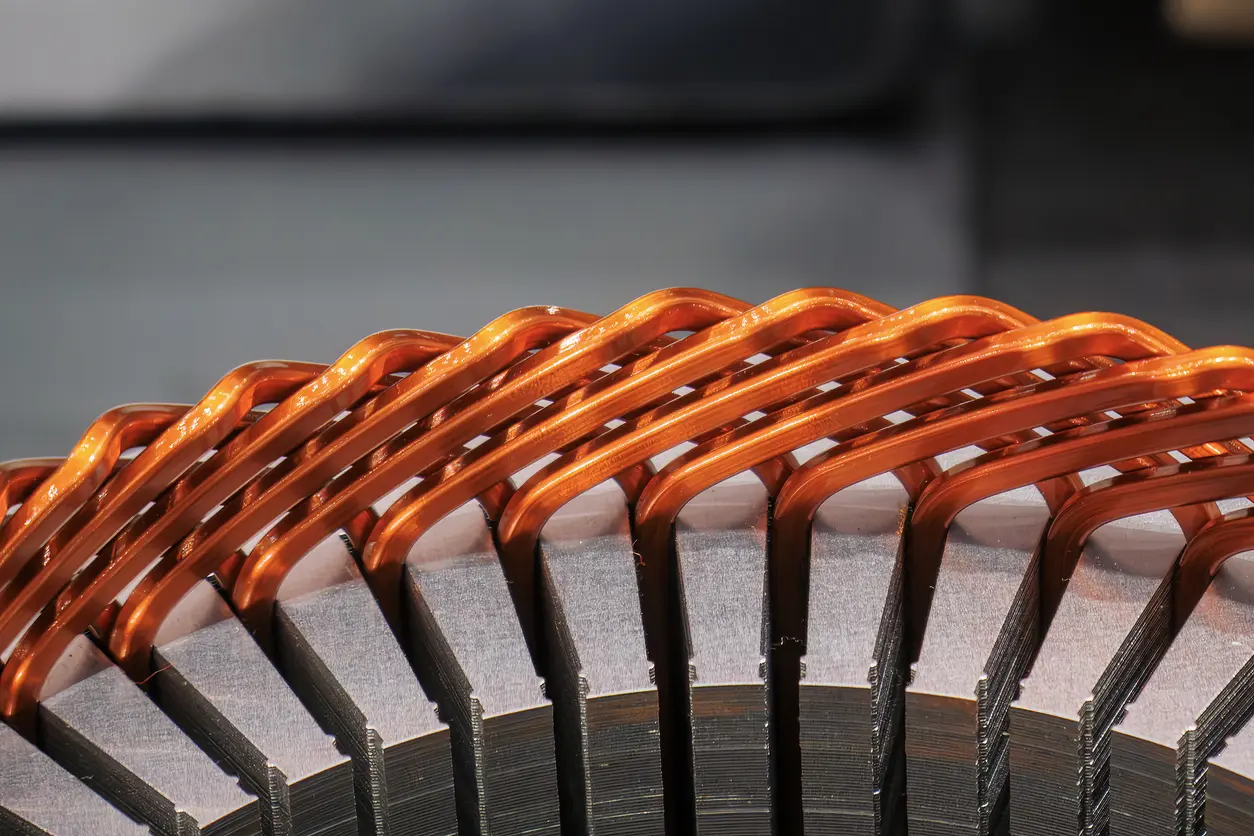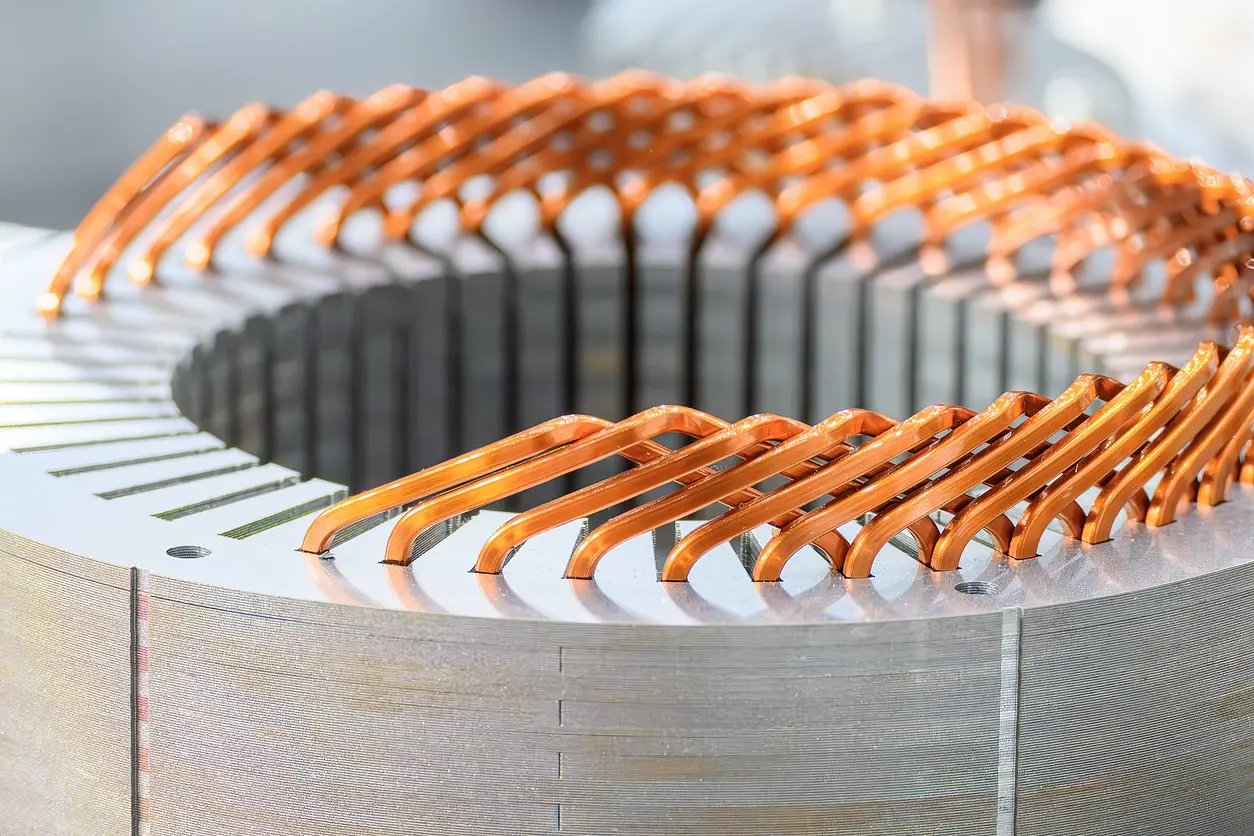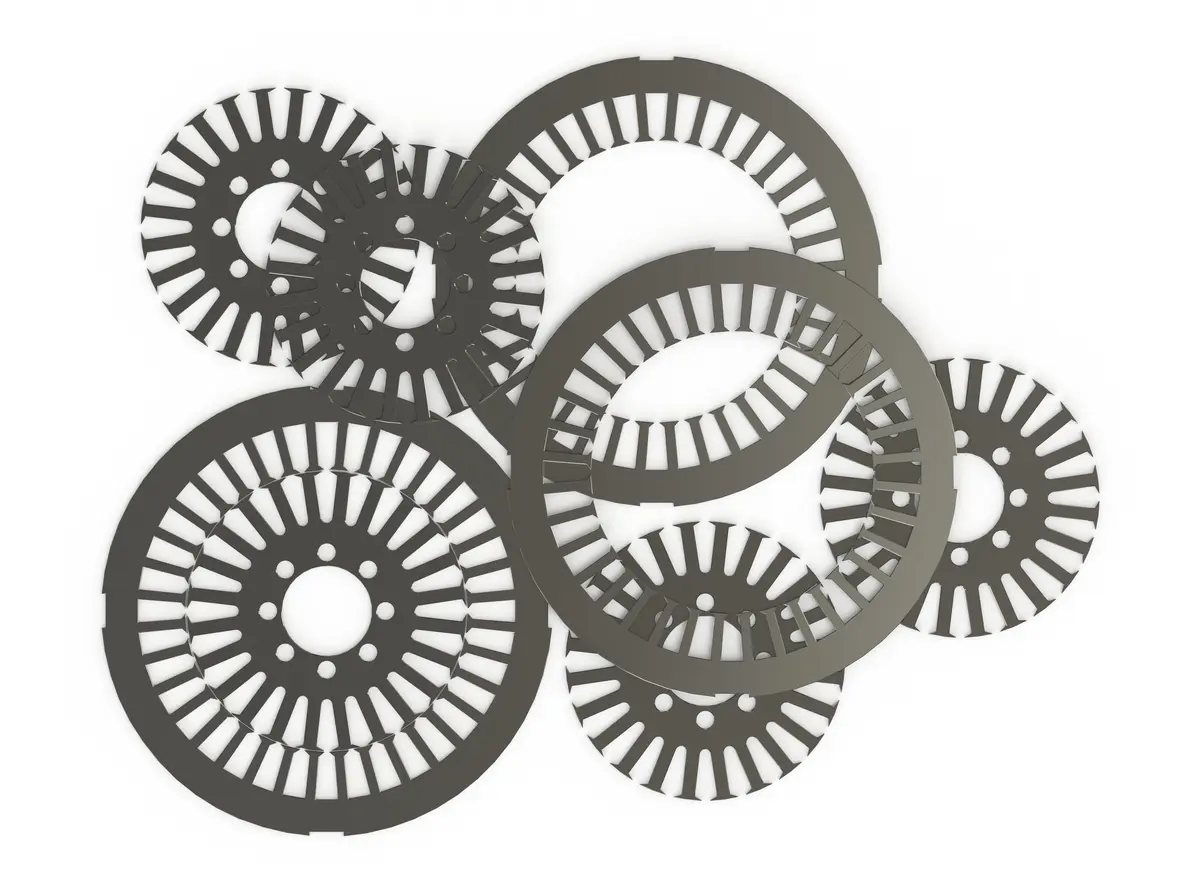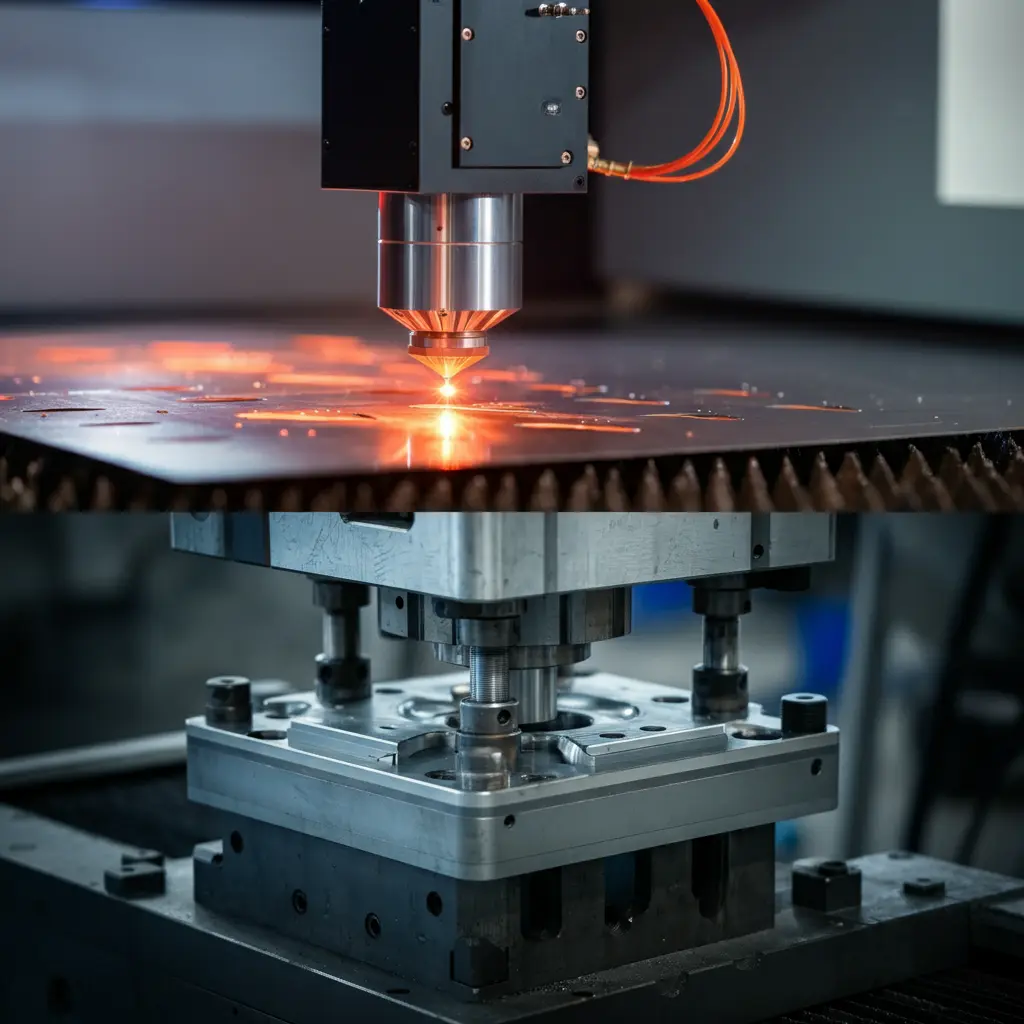“Self-Bonding Electrical Steel is driving the next era of motor innovation by automating lamination bonding and reducing core loss in motors. Discover how it outperforms traditional materials and enhances reliability in drones, robotics, and industrial applications.”
1. Reinterpreting Motor Core Loss (What is core loss in motors?)
1.1 Major Causes of Motor Core Loss
a. Hysteresis Loss
Hysteresis loss mainly occurs during repeated magnetization and demagnetization of the material. When a motor is running, the silicon steel sheets inside the core are repeatedly subjected to an alternating magnetic field, requiring frequent switching of their magnetic orientation and thereby consuming energy. Although different materials exhibit distinct magnetic properties, higher silicon content or specially refined silicon steel can mitigate such loss to some extent. However, actual results still depend on design and machining precision, so it is difficult to eliminate these losses entirely.
b. Eddy Current Loss
Eddy current loss arises when an alternating magnetic field induces currents within the motor core, which then dissipate as heat. In discussions of core loss in motors, eddy current loss is closely linked to sheet thickness, insulation quality, and processing techniques. If silicon steel sheets are too thick or the stacking is not tight, eddy current loops become larger, leading to more severe energy loss. Choosing thinner silicon steel sheets, maintaining tight lamination, and adding high-quality insulation coatings between layers can help reduce this portion of the loss.
1.2 Why Core Loss Deserves Attention
a. Impact on Efficiency and Cost
Over time, core loss in a running motor accumulates, directly affecting electricity consumption and operating costs. Effectively controlling core loss in motors can not only boost motor efficiency but also reduce long-term power expenses. From an overall business perspective, lowering losses contributes positively to competitiveness and energy conservation.
b. Relationship to Motor Temperature and Lifespan
Excessive loss generates extra heat, raising the internal temperature of the motor and potentially causing material degradation or winding insulation damage over the long run. Overheating also tends to shorten the motor’s operational life and reduce its stability. By keeping core loss within reasonable bounds, one can lessen the risk of overheating while increasing the reliability and lifespan of the motor.
2. What Is Self-Bonding Electrical Steel?
2.1 The Self-Adhesive Mechanism and Material Composition
a. The Principle of the Special Coating
Self-Bonding Electrical Steel is produced by applying an adhesive-enabled coating onto standard silicon steel, allowing each sheet to bond automatically during lamination. This design removes the need for rivets or glues, reducing extra steps and minimizing the risk of gaps due to poor fastening. Because fewer gaps and burrs are formed, eddy current pathways are suppressed, thereby helping to control core loss in motors to a certain degree. For motors running for extended durations or at high speeds, this can lessen hidden losses brought about by vibration or friction between sheets.
b. Differences from Conventional Silicon Steel
Traditional silicon steel sheets usually rely on mechanical or chemical methods for lamination, which might introduce localized stress concentrations or additional conductive points, ultimately raising motor core loss. By contrast, Self-Bonding Electrical Steel employs continuous bonding to align and secure each steel layer more accurately, reducing the likelihood of interlayer shifting and mechanical stress. Even under heavy load conditions, the lamination structure can maintain consistent performance, helping minimize unnecessary energy loss during motor operation. Naturally, this improvement does not guarantee the elimination of all heat and loss issues, but from a conservative standpoint, it can keep core loss in motors at a relatively low level.
2.2 Range of Applications and Value
a. Balancing Efficiency and Quality
Because Self-Bonding Electrical Steel can complete high-quality laminations in less time, it both enhances efficiency and maintains consistency in large-scale production. Coupled with its advantage in lowering core loss in motors, it is particularly well-suited to industrial motors that require stable performance and to high-speed drone or robotics applications.
b. Long-Term Investment and Potential
While the initial outlay may be higher, the growing market emphasis on energy savings, carbon reduction, and high efficiency has boosted the role of Self-Bonding Electrical Steel in motor applications. With more rigorous process control and technical refinement, this material could become pivotal, delivering broader benefits for future motor development and design.
3. How Self-Bonding Electrical Steel Effectively Reduces Motor Core Loss
3.1 Suppressing Eddy Currents and Reducing Hysteresis Loss
a. Tightly Laminated Layers and Interlayer Insulation
Self-Bonding Electrical Steel features a specialized coating on its surfaces so that each layer automatically bonds when stacked. This not only lessens gaps but also eliminates extra conductive paths caused by adhesives or rivets. With fewer gaps and burrs, eddy current loops are less likely to form, significantly curbing the energy loss induced by alternating magnetic fields. For companies looking to reduce core loss in motors, such stable and efficient lamination offers both higher operating performance and reliability.
b. Minimizing Vibration and Heat Concentration
Because the self-adhesive method results in a more cohesive core structure, lamination vibration is diminished during high-speed rotation. Less vibration means fewer added losses caused by mechanical stress. Moreover, tightly laminated steel sheets facilitate quicker dispersion of heat, preventing local hotspots and further reducing negative effects of hysteresis loss on motor performance. While not entirely eliminating losses, this improvement can conservatively keep core loss in motors at a relatively low level.
3.2 Stabilizing Magnetic Flux Paths and Process Optimization
a. Precise Control of Sheet Thickness and Coating Quality
Self-Bonding Electrical Steel is often paired with thin-sheet designs and advanced insulation coatings to reduce the likelihood of eddy current loops. By employing precise machining and consistent quality control, motors can maintain desirable magnetic permeability and limited losses even under heavy loads or high-speed operation. This proves highly useful for industrial motors requiring prolonged operation, as well as drones and robots needing extreme lightweight and performance.
b. Integration with Existing Systems
By introducing Self-Bonding Electrical Steel, manufacturers can save on lamination time and labor expenses while achieving greater uniformity in mass production. For motor applications demanding high volume and strict precision, refined process control and wise materials selection can conservatively deliver steady and reliable performance gains, effectively responding to market calls for improvements in core loss in motors.
4. Key Points in Processing and Manufacturing Self-Bonding Electrical Steel
4.1 Lamination and Assembly Processes
a. High-Precision Automated Alignment
When manufacturing Self-Bonding Electrical Steel, automating alignment systems can enhance stacking accuracy and shorten assembly time. Because each layer bonds automatically via the special coating, there is no need for traditional rivets or glues, which lowers production costs and human error. For manufacturers concerned about core loss in motors, an automated workflow can yield steadier performance and consistency, reducing extraneous losses from stray processing mistakes.
b. Quality Monitoring and Testing
Ensuring that Self-Bonding Electrical Steel truly fulfills its intended function during lamination often involves carrying out multiple checks, such as no-load loss and balancing tests. No-load loss testing offers a quick indication of a motor’s core loss under ideal conditions, while balancing ensures proper alignment without significant eccentricity. If test results indicate high loss or excessive vibration, process steps and lamination details should be investigated promptly to maintain control over core loss in motors.
4.2 Comparison with Conventional Manufacturing
a. Cost and Efficiency Considerations
Although Self-Bonding Electrical Steel generally has a higher material unit price, it requires fewer lamination steps and fastening components, so the overall production process can be completed efficiently. For large-scale, long-term output, this approach typically provides more stable quality and fewer rework issues, indirectly enhancing the energy performance of the motor in operation.
b. Technical Barriers and Production Transition
Firms looking to switch to Self-Bonding Electrical Steel should still evaluate the up-front costs for equipment upgrades and worker training. Once these hurdles are overcome, maintaining stable lamination quality and robust insulation performance can strengthen the ability to manage core loss in motors. From a conservative standpoint, adopting this method does not guarantee a solution to all loss-related problems. Still, with aligned design, manufacturing processes, and materials, a better balance between high performance and consistent quality can be attained.
5. Real-World Application Cases
5.1 Industrial Motors and High-Speed Electric Motors
In the industrial sector, motors often operate for extended periods and under high loads. If the core loss is too large, not only do energy costs rise annually, but the risk of equipment failure also increases. One sizable factory, when introducing a new line of industrial motors, specifically opted for Self-Bonding Electrical Steel to more effectively suppress core loss in motors.
Post-deployment test data showed that, compared with the previously used materials, the new motors generated noticeably less heat under the same load conditions and demonstrated higher reliability over long runs. Although the per-unit cost was higher, fewer repairs and less downtime kept total costs stable. Overall, for that company, this was a cautiously beneficial upgrade strategy.
5.2 Drone and Robotics Motors
Outside of industry, Self-Bonding Electrical Steel also offers potential in high-speed, lightweight settings. Drones and robotics often require motors to accelerate rapidly and endure extended operating durations, and if core loss in motors is not adequately managed, persistent heat or vibration can degrade precision.
A startup developing upgraded drone power modules used cores made with Self-Bonding Electrical Steel, combined with refined winding and cooling designs.
Though the early testing phase highlighted some production-flow issues needing adjustment, after full integration and validation, the drone’s flight time increased by roughly 10%, and motor temperature remained within acceptable limits. This example shows that while Self-Bonding Electrical Steel cannot completely eliminate all energy and heat challenges, if combined with meticulous design and process calibration, it can help reduce core loss in motors, delivering higher-quality holistic solutions for particular industries.
6. Key Considerations for Mass Production and Quality Inspection
6.1 Functional Testing and Verification
Before moving into large-scale production, it is crucial to ensure Self-Bonding Electrical Steel meets the required functional and quality standards for lowering core loss in motors. The first steps often involve both lab tests and real-world operational trials. A no-load loss test gives an initial reading of energy consumption under ideal conditions, whereas measuring temperature and current draw during actual operation reveals stability and reliability over prolonged usage. If tests show abnormally high losses or temperatures, investigating lamination adherence, coating integrity, and other process details is recommended to avoid higher correction costs after formal mass production begins.
Beyond the lab stage, manufacturers can adopt in-line automated monitoring systems. While mass-producing Self-Bonding Electrical Steel, real-time detection can track the degree of interlayer adhesion and watch for edge burrs, with big data analytics quickly pinpointing possible causes for rising defect rates. This not only reduces human error in inspections but also accelerates problem reporting, minimizing production line downtime.
6.2 Long-Term Stability and Maintenance
Even after successful mass production, Self-Bonding Electrical Steel requires periodic tracking of its quality and performance, especially in high-load or high-speed contexts. Motor companies typically advise customers to re-examine the bonding state and surface coating inside the core after a certain number of operational hours, checking for looseness or damage caused by environmental factors or overloads. Should such details go unmonitored, core loss in motors may gradually increase over time, harming overall motor efficiency and product lifespan.
To prevent issues from escalating, a conservative yet effective approach is regular checks and adjustments, such as inspecting lamination flatness or measuring changes in no-load loss. Any deviation from the intended design range can then be rectified or replaced in time. This not only helps lower operating costs but also maintains market competitiveness, ensuring that motor products continue to meet customer expectations for stability and high efficiency.
7. Conclusion: Self-Bonding Electrical Steel Leading Toward Efficient Motors
7.1 Comprehensive Benefits and Application Potential
Self-Bonding Electrical Steel sheets exhibit remarkable potential for reducing core loss in motors. By applying a special coating that allows each silicon steel layer to bond automatically, they mitigate gaps and burrs typically arising from adhesives or rivets, while retaining the overall stability of the lamination structure. This particularly benefits motors running for extended durations or at high speeds, helping avert performance decline caused by ongoing vibration and heat buildup.
More importantly, the application scope of Self-Bonding Electrical Steel is not restricted to one specific industry: from industrial-grade motors to emerging fields such as drones and robotics, enhancing core loss management leads to boosted operating efficiency and longer product lifespan. Although initial material and process investments may be higher, from a long-term perspective it effectively cuts back on repair costs and energy consumption. Thus, in the dual pursuit of stability and energy savings, this distinctive material shows promising market potential and room for development.
7.2 Recommended Actions
Companies or R&D teams interested in implementing Self-Bonding Electrical Steel sheets should begin by assessing their current motor designs and processes, verifying that the material will noticeably improve the key factors behind core loss in motors. For large-scale producers, preliminary pilot tests and analyses—covering no-load loss tests, balancing checks, and more—can ensure that the final product maintains consistency and low defect rates in mass production.
Moreover, forging long-term partnerships with suppliers or research institutions with solid technical capabilities can help businesses acquire timely resources for new material development, process improvements, and inspection equipment upgrades. By adopting such a collaborative model, companies can more reliably enhance motor performance and align with the green energy movement, fully capitalizing on the advantages of Self-Bonding Electrical Steel across a broad spectrum of market applications.
External resources: https://easa.com/resources/resource-library/core-loss-testing-tips-for-special-cases-1
Internal links: Self Bonding Lamination vs. Traditional Methods: A Comparative Analysis for Manufacturers





